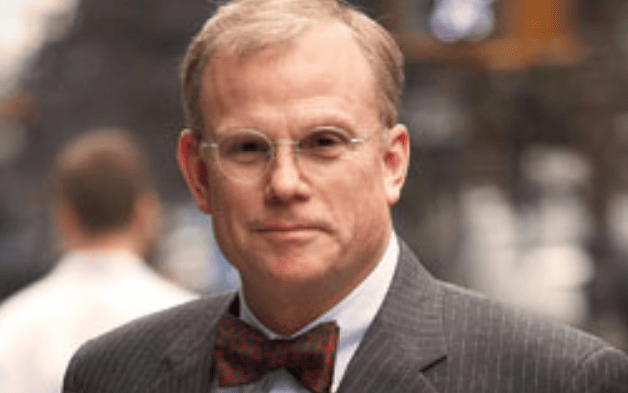Amanda White looks back at the past six months, how investors have reacted and what change is yet to come.
When the chaos caused by the COVID-19 health pandemic and related economic maelstrom first started, the biggest discussion investors were having was about risk.
Investors were looking at risk not just in the context of market volatility but more fundamentally what risk is for long-term investors, and a lot of that has to do with liquidity.
Many of the CIOs are focusing on liquidity in the context of rebalancing but also in order to have dry powder to take advantage of the opportunities in a disrupted market.
Some examples of that are:
- The $60 billion Pennsylvania School Employees Retirement System that in April sold $1 billion of US long treasuries to rebalance to its 6 per cent allocation, which was pushed out by the equities market volatility
- Many of big long-term investors have been “leaning in” to the opportunities presented by the market volatility, including the $100 billion State of Wisconsin Investment Board which has moved its stance from defensive to offensive
- The Investment Management Corporation of Ontario, which was only formed about two years ago and manages C$70 billion, being quick to invest in credit and working with Apollo to invest in mispriced credit risk. It only took about six weeks to allocate the capital.
Of course, there are many examples of investors that have lost a lot and bounced back:
- The London Collective Investment Vehicle, the pooling manager for the pension assets of London’s 32 boroughs with about £18 billion, lost around 15 per cent in April alone
- New Zealand Super, which has a portfolio that is about 80 per cent equities, lost 20 per cent from December to March. The second time in 18 months its portfolio has undergone such a loss.
There are a couple of important lessons in this:
- Good governance is everything – so that funds can stay focused on the long term and not react to market movements and make bad decisions, or be distracted by stakeholder management
- Rebalancing is an opportunity – which again comes back to liquidity
- And maybe some of the investment assumptions used in the past may not be applicable in the future.
A continued concern for investors – particularly in the US – has been where they’re going to get their returns from.
This is especially true for larger investors where the smaller opportunities in hedge funds or distressed debt might not impact their overall portfolio too much just because of size.
CalPERS, for example, has assets of $400 billion and a return target of 7 per cent. Their former CIO Ben Meng had a plan to use leverage to get further into private equity. This received a lot of criticism in the public domain and it is unclear since Meng’s resignation if this plan is still on track.
Portfolio resilience
Nearly all the conversations I’ve had over the past few months have involved a conversation around scenario testing.
Perhaps the best at incorporating this into their process is CPP Investments – one of the world’s most sophisticated pension funds, employing about 800 people and managing a lot of assets internally and direct. Optrust, another Canadian fund, is concentrating on building a resilient portfolio designed to withstand all environments. And it stress-tested its current portfolio under thousands of different macro scenarios.
But overall while investors have been looking at opportunities there is also a consensus that things will get worse before they get better.
According to CPP Investments global economic activities will not be back to pre-COVID levels until 2022 and they expect the situation to get worse before it gets better.
Related to resilience is a conversation around trust. The CEO of GIC, the Singaporean SWF, Chow Kiat Lim, talks about how the pandemic has revealed examples of how companies have been able to take bold actions because they have built trust over many decades.
Investors expect their investee companies to be positioning their business for the continued difficult economic conditions and what resilience looks like. If companies have trust – from their workers, partners, suppliers and investors – they can take bolder actions to be resilient in difficult times.
This is a lesson for investors and their service providers too. Working together for a common goal, with shared beliefs and shared interests, is important more than it has ever been. A low return environment, combined with general market uncertainty – extending beyond investment risk to operational risks – is the perfect time for service providers to be proving their worth.
Sustainability 2.0
Investors have been focusing on engagement and active stewardship, and with Climate Action 100+ proving to be an effective, collaborative model many investors are also looking at how they engage for change around labour rights with regard to companies’ treatment of workers and stakeholders.
Investors are moving their stewardship activities to COVID-related disruption and the Investor Statement on Coronavirus response is an example of the priorities.
New research by the Responsible Asset Allocator Initiative at New America finds that the top investors are actively allocating capital to COVID-related issues. It shows that the 25 leading public pension and sovereign wealth funds, with assets of $6 trillion, are investing tens of billions of dollars in COVID-19 solutions and in funds to support stricken companies.
This is a sign that many investors are taking sustainability issues more seriously, perhaps one of the silver linings of this pandemic. And in particular the move to sustainable investing 2.0 which is an evolving framework from risk/return to risk/return/outcome is a discussion among leading investors.
The PRI is working on a new framework to guide investors on this exact thing, and how to incorporate outcomes or impact into decision making and measurement of investments.
The PRI is also evolving its reporting framework to actually make it more difficult to get the top rankings. It will have new minimum requirements and be more aligned with the SDGs and that new framework will be rolled out in January.
With fires raging in California and continued racial injustice in the United States there is plenty to think about in terms of sustainable investing. The Sustainable Development Goals, which celebrate five years in September, continue to be a guiding path for investors and are a clear indicator of what the global risks are and where capital needs to be directed.
Harvard endowment is the latest investor to commit net zero by 2050 and a big part of their plan is how they work with external managers to achieve that. Over the past seven years or so HMC, which manages the endowment, has moved from external investment management to internal and now is working towards external again.
Anne Simpson, who is the head of sustainability at CalPERS, says it’s important for investors to think about whether climate change is a portfolio issue or systemic issues. CalPERS has approached it as a systemic risk partly because of the size and influence of their portfolio.
CalPERS is involved in Climate Action 100+ which is a focused list of the biggest emitters. Those companies would be third largest emitters if they were a country after China and the US. The fund is also increasingly looking at different asset classes including fixed income with regard to climate.
Nigel Topping, who is champion of COP26 – and will speak at the Sustainability 2020 Digital conference – says COP26 will be the first time that people wake up to the fact this transition is inevitable.
He says the world is finally waking up to the fact that some business models and cultures are not fit for the future. Topping said an example of that is the behaviour and accountability of Rio Tinto executives in choosing to destroy 46,000-years old Aboriginal rock shelters in order to access iron ore.
But this transformational change will not happen in a linear way and that the herd mentality of the finance industry could mean it misses the early signs of transformational change and gets caught out.
“So basically, if you’re not ahead of the curve, you’re choosing to be behind the curve because an exponential curve is always ahead of you,” he said.
He added that investors have been the last to be held to account by the rest of the world on these issues, and the next decade will see corporate CEOs fed up with banks, fund managers and asset owners telling them what to do but not having their own house in order.
There is much more change to come.




